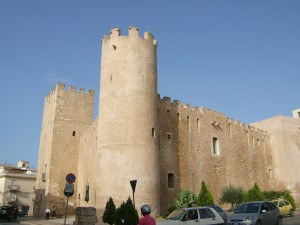
The Chrysler Building on 42nd Street in NYC is the latest National Historic Landmark to achieve LEED Gold Certification. While the United Nations headquarters undergoes a $2B rehabilitation.
The fifth public comment period for what is now being called LEED v4 just closed on Monday. After a year of public comments, outrage and excitement, LEED is on its way to the biggest changes since it first entered the marketplace in 2000. As first a staff person and now a consultant to the National Trust for Historic Preservation, I have been involved as the liaison between the Trust and USGBC since 2007 – helping both organizations to think about ways to better integrate preservation, social and cultural metrics into the most famous green rating system in the world. I have seen major changes to the rating system and the thinking on both sides of the table. Has it come as far as I’d like it? Probably not. Will LEED save the planet? Definitely not, at least not the way it stands right now. But we have no better system yet. And one of the major reasons we don’t is because of the lobbying of the large manufacturers – vinyl, replacement windows, wood companies and organizations fighting one another. Every time one of them sues USGBC for trying to limit the use of their products or semantics they don’t like, it takes away from the ability of USGBC and all of us to tell the truth.
Existing Buildings Starting to Get The Notice They Deserve
As I reported in my last blog, existing buildings were on everyone’s mind at the Greenbuild International Summit I participated in last month. Almost fifty percent of the greenhouse gas emissions in the United States are from the operations and maintenance of buildings. And that’s from existing buildings – which includes historic buildings hundreds of years old and the new sassy green skyscrapers. When you add in construction and demolition activities the number is over fifty percent.
What’s Next For LEED?
LEED 2012 will be the first version in which historic preservation values are included consistently throughout all 18 rating systems. There is now a specific credit in the Materials and Resources category that provides 5-6 points for historic buildings with no significant burden of proof beyond documentation of existing landmark status. The legal definition of historic buildings, landscapes and sites, both local landmarks and state and National Register-listed landmarks, are provided and properly acknowledged throughout the systems.
There are also now a variety of credits that provide exemptions for historic buildings since in many instances it would be difficult – if not impossible – for some buildings to achieve standards because of their existing design characteristics. While we applaud these exemptions, we remain concerned that it will be difficult for other existing buildings – those without historic designations but that still contribute value to their communities—to meet certain credit criteria. It’s also unfortunate that the amount of points available for reuse of existing and historic buildings continues to inadequately reflect the positive environmental action of reuse over new construction. I am hopeful however that these changes plus the growing body of voices from around the world adopting LEED will improve the representation of appropriately recognized metric values for existing buildings in the rating systems. When countries in Europe for example adopt LEED, they bring cities filled with buildings that are centuries and millennia old, and that is changing the dialogue.
The Italian Green Building Council Rethinks the Credit Categories

Dr. Boarin suggests a rethinking of the LEED categories to address “pre-industrial” or traditional architecture such as this castle in Alcoma, Sicily.
I had the honor of facilitating and speaking at the closing plenary of the Greenbuild International Summit with two colleagues from Italy representing the GBC Italia (Italian Green Building Council). Paola Boarin, PhD and Daniel Guglielmino, PhD shared their efforts to add more cultural metrics to LEED through the New Construction and Existing Buildings: Operations & Maintenances rating systems. Dr. Boarin presented a clear and comprehensive case for adding a new credit category called “Historic Value” making LEED a more holistic approach to sustainability. Dr. Guglielmino presented research and recommendations that support the importance of having LEED better acknowledge regional differences and impacts.
As I do with every public comment period for LEED, I reviewed and evaluated the changes and prepared a list of the top credits preservationists should care about. As I reviewed my blogs over the past five years, I saw significant changes – some wins, some losses. Now with 89 countries around the world members of the World Green Building Council, the voices being heard in LEED are diverse and strong. New ideas are being heard and more changes to LEED are inevitable. And that’s a good thing.
And if you’d like to “subscribe” or follow my blog, True Green Cities, please sign up through the “Subscribe” button at the bottom left of this page. You’ll receive a daily recap when new blogs are posted. Or Sign up for the Feed.
